Home › Forums › Practice & Advice › Skeletons and adding muscles on top - what's your approach?
This topic contains 10 replies, has 5 voices, and was last updated by
![]() samorexic
6 years ago.
samorexic
6 years ago.
- Subscribe Favorite
-
December 8, 2018 1:59am #3352Hi guys and gals,
So I'm very into gestures now a days. The approach I have now, is that I want to be able to turn around the human form as a 3D model in my mind. To build that intuition for the human form, I started with drawing gestures based on a simplified skeleton. I did that for a while, and I've now recently gotten into putting muscles on top of that skeleton.
Examples from my sketchbook follows underneath (sorry for the crappy pictures, I had to adjust the contrast to make my faint lines more visible). I'm fairly pleased with the life in most of my skeletons and gestures, but of course there is a lot of room for improvement.
My question is this - what is your approach to drawing lively gestures with good proportions from models? You can faintly see the skeleton within the "muscled" figures. The problem is that my approach is double work - I first draw the framework, then I erase it so it is barely visible, and then I end it by putting muscles on top. It seems cumbersome and time consuming, and I wanna improve as fast as possible (life is short).
Do you have any tips on alternative approaches? Videos that give some good advice on this would be appreciated as well
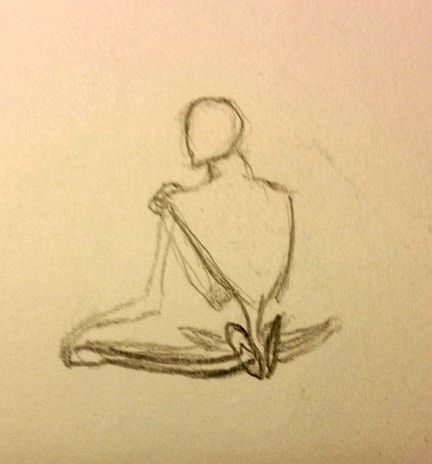
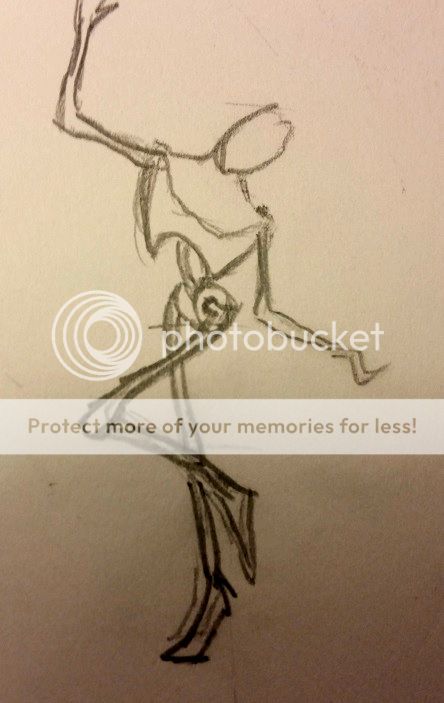
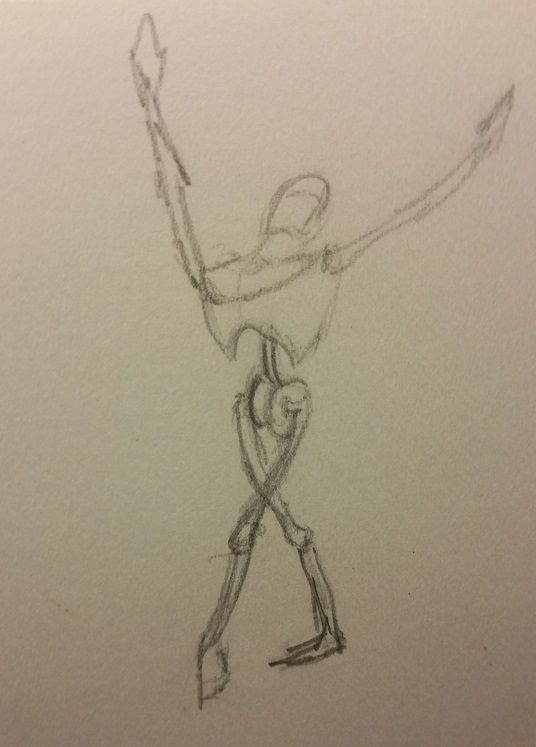

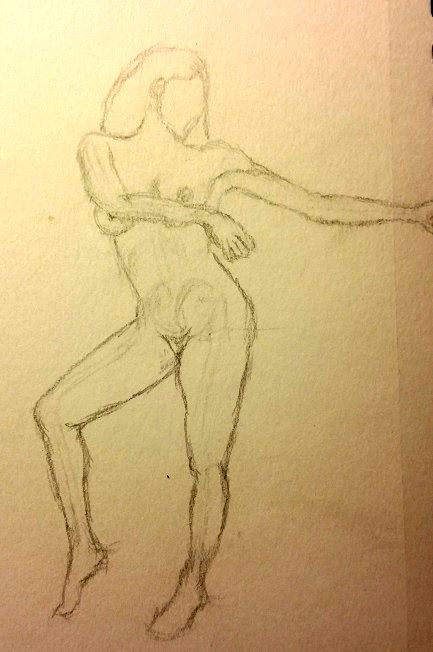
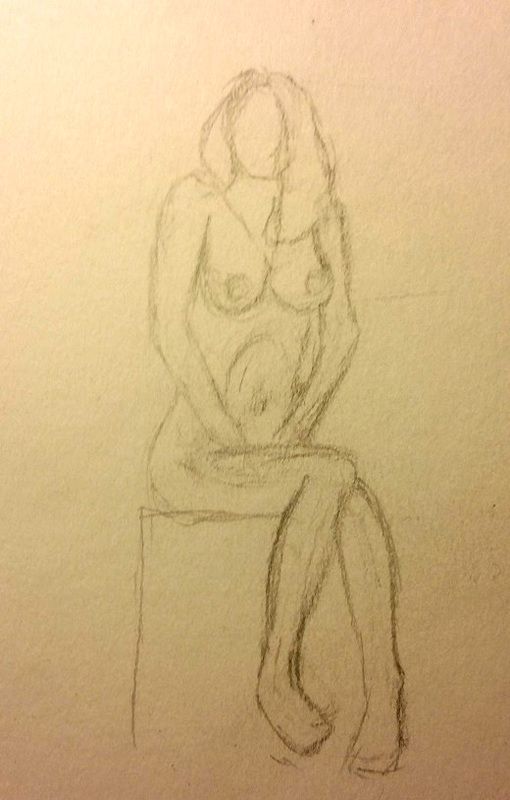
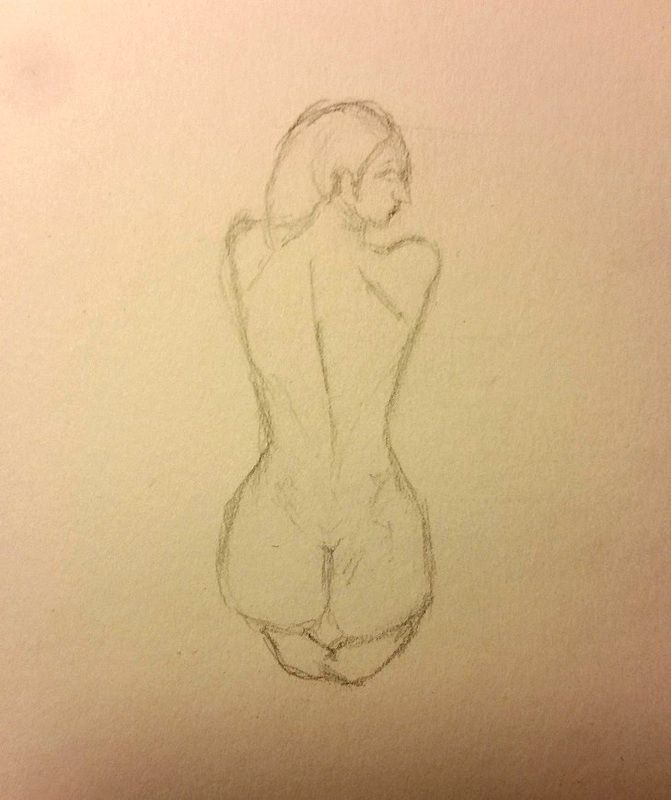
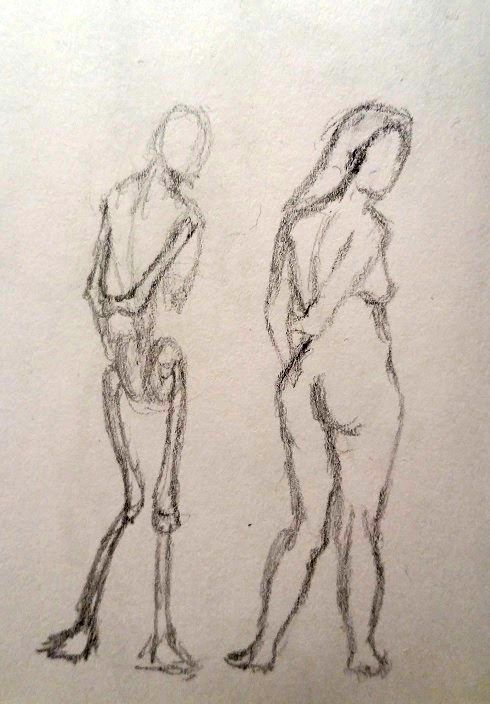
 January 8, 2019 8:33pm #3431January 11, 2019 2:29pm #3438Study where the muscles attach and what the muscles are there to do. Also Adding muscles ontop of a simplified mannequin isn't good practice imo. But we all use different techniques.
January 8, 2019 8:33pm #3431January 11, 2019 2:29pm #3438Study where the muscles attach and what the muscles are there to do. Also Adding muscles ontop of a simplified mannequin isn't good practice imo. But we all use different techniques.-
 Sanne
edited this post on January 11, 2019 11:45pm.
Reason: Please treat the subject of nudity with respect
Sanne
edited this post on January 11, 2019 11:45pm.
Reason: Please treat the subject of nudity with respect
January 11, 2019 9:22pm #3439One way to make your current practice less time-consuming would be to draw the skeletal frame in a much lighter pencil or different color than the mucle overlay. Then you can at least save time not having to erase and get a better sense of how things fit. George Bridgeman's Constructive Anatomy book and technique might help you out a lot, too.
I suppose, if you want some quicker practice sessions, you could use the figure drawing pictures here and only draw them as skeletons. Even if you're not putting muscles back on them, that ought to make your bones/frames improve much more quickly.-
Meijin Bell edited this post on January 11, 2019 6:25pm. Reason: Spelling
January 11, 2019 11:05pm #3440@Stuffed - I agree that studying anatomy is required for drawing realistic humans, but do you suggest I learn to draw a more realistic skeleton before I add on muscles?
@Meijin Bell - Yeah, I've actually done what you suggest, drawing the frame with a lighter touch so that it differentiates from the muscles clearly. That was an interesting approach!
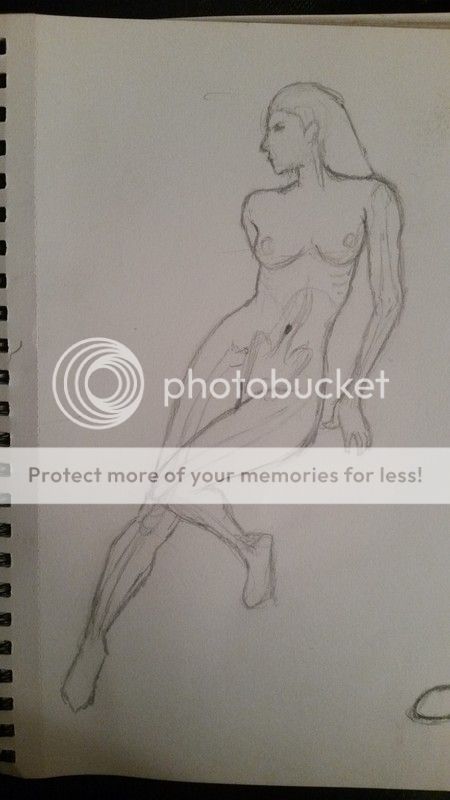
Do you guys do gesture drawing? Just expressive lines to capture movement in a figure? I think I've confused gestures with whatever I'm doing. What's your approach to that?
When you draw the models here on the site, how do you approach it? Do you go for gestures, scribbly lines or realism?
Thanks for the feedback, it's very appreciated!
Also, do you know of a better website for uploading pictures than photobucket? For obvious reasons :P
Cheers from Norway!-
 Sanne
edited this post on January 11, 2019 11:52pm.
Sanne
edited this post on January 11, 2019 11:52pm.
January 13, 2019 2:16pm #3441The ribcage anatomy you’re drawing is too squat and too wide. There’s nothing wrong with drawing a simplified ribs and pelvis to help anchor your torso structures. But the simplification you’re drawing doesn’t support correct anatomy. There’s at least half dozen approaches to simplifying the bones of the torso for quick sketches that show movement. If a ball for the ribs doesn’t work for you, consider a block/cube sort of thing, or using roughly 2 head shapes, one for each lung. For the pelvis it looks like you’re abstracting it as a kind of cylinder, and that can definitely work, but I don’t think it’s serving you well. Proko has some videos using this abstraction and they might help you figure out what is going wrong. What I usually do is small balls for the big ball joints. And a cube or block can work. (There’s more options! So many more!) I don’t think Alphonso Dunn has any videos going over gestures where he focuses on particular methods, but he definitely has useful vids too.
Most posters here are focused on gesture drawing. This can be described in bunches of ways but for your purposes it’s probably best understood as a very fast representation of how the model’s muscles are moving or not moving. In a fast pose you might get a single line for the entire body. Then in a longer pose you fill in gestures for various body parts to clarify the pose. In a long pose it can start digging into tiny muscles. While the fast poses can seem very devoid of anatomy, it rapidly gets very intense on anatomy and proportion.
There’s a 3 part basics of gesture drawing series up in the learn tab. It focuses on ways to approach the 30s warm up poses you encounter in class mode. If a video would help, Croquis Cafe has a series of 2-3m videos discussing various aspects of gesture drawing. I’d strongly recommend trying out a couple 30m classes here or a couple Croquis Cafe sessions for each of the methods you can dig up.January 14, 2019 8:28pm #3449Quote:
Do you guys do gesture drawing? Just expressive lines to capture movement in a figure? I think I've confused gestures with whatever I'm doing. What's your approach to that?
When you draw the models here on the site, how do you approach it? Do you go for gestures, scribbly lines or realism?
There are *tons* of different valid practice methods of course, but I wanted to point you to our 15 minute interactive tutorial, which focuses on one of the more common ways to utilize gesture drawing practice and explains some of why you might want to incorporate these exercises into your practice regimen: https://line-of-action.com/learn-to-draw :)January 14, 2019 9:16pm #3450Yeah. I've been using this site for a while now, and it wasn't until yesterday I did the 15 minute tutorial. Thanks for pointing it out!
I've been checking out Proko's videos every now and then, and I'm checking out his stuff on gestures as I write. I think I have a better feel for what gestures are about now. When I look back on many of my skeleton frames they seem a bit stiff and dead. And as I far as I understand drawing gestures are a good way to capture the life of a pose, especially if you exaggerate the curves a bit. And they are fun to draw as well! I forgot that Croquis cafe actuallyexists, thanks for reminding me! Will definitely try out the gesture drawing classes.
Thanks for the input, greatly appreciated!January 16, 2019 9:28am #3453Yeah Proko is usually too long for me (I have ADD and video is often really hard for me as a learning tool). But his vids work for a lot of people. And they’re very good on fundamentals. I prefer the Croquis Cafe teaching vids on the same ideas because they’re very very short and focused. But different brains learn differently. And that’s a factor in all this too... gotta work with the brain and hands you have.
Both Croquis Cafe and class mode here are great tools. 30m for a short class here is right on the edge of what I can handle, a Croquis Cafe class targets about 20m of drawing time and is a bit less tiring. But if I try to do the same amount of drawing with fixed time poses, I’ll probably tap out in under 15m. If it’s the other way around for you, whatever works to get you drawing more.
However you approach your practice, it’s a good idea to look over what you did at the end and think over whether any of your drawings were particularly good. Did one seem to really match well with your goals? Was there one where it just flew by? I don’t find it helpful to focus on the bad drawings. Mostly they’ll be bad and trying to figure out why is a waste of time. But you need to find the good parts to stay motivated. Good parts mean there’s something you did right, something you want to repeat.January 23, 2019 8:36pm #3472@Sanne haha that really hit my funny bone. Will try to filter my humor as best as I can
@Bard I think if what you are going for is deliberate practice it isn't supposed to be easy, you don't have to make a photorealistic skeleton but it is good practice to make it look more like a real skeleton as time goes by. Also if you don't know where the muscles attach you will be forced to copy the contours of the reference. Give anatomy 5 or 10 minutes a day, you'll be surprised how much you remember in just a week.
Greens, they are everywhere! ( /)u(\ ) -
Login or create an account to participate on the forums.








